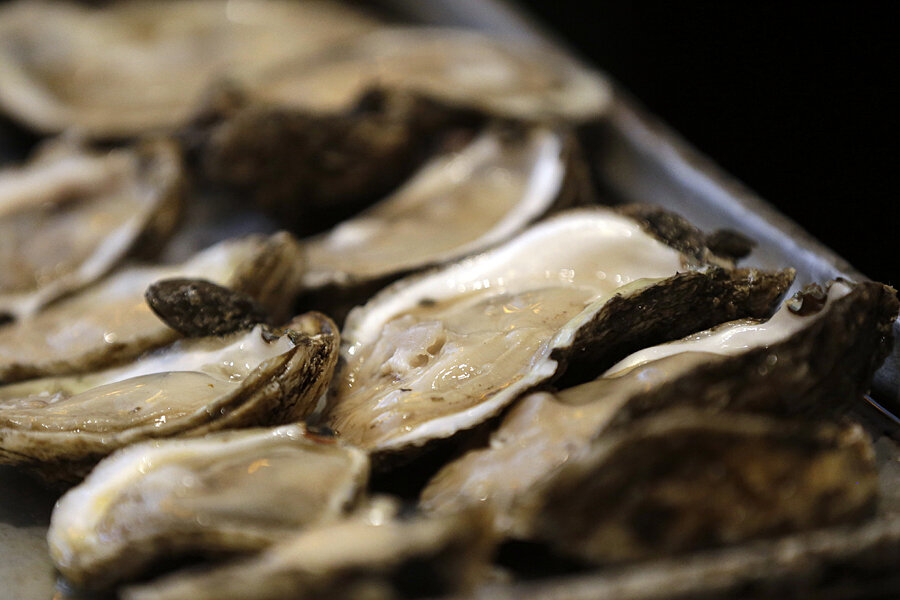Oil spill: Gulf oysters vanish after 2010 spill
Loading...
Fisherman Randy Slavich drags a clunky metal net through an underwater oyster bed in Lake Machias, a brackish body opening into the Gulf of Mexico. For generations, this has been a bountiful lake for harvesting oysters, long before millions of gallons of oil spilled off Louisiana's coast in the 2010 BP oil spill.
On this day, Slavich's cage-like net pulls up dozens of empty, lifeless oyster shells.
"It's not good," he said, shaking his head as he pushed the shells back into the water. "We've never seen it like this, not out here."
Gulf Coast oyster harvests have declined dramatically in the four years since a BP PLC oil well blew wild in the nation's worst offshore oil disaster. Even after a modest rebound last year, thousands of acres of oyster beds where oil from the well washed ashore are producing less than a third of their pre-spill harvest.
Most worrisome to Slavich is the dearth of oyster larvae — future generations of oysters — once found in abundance on shells in the lake, east of the muddy bends of the Mississippi River.
Whether the spill contributed to the decline is part of an ongoing study; hurricanes, overfishing and influxes of oyster-killing fresh water had already put pressure on the industry.
"To the extent that oyster populations are down, data from government studies have indicated it is likely due to other conditions," Geoff Morrell, a BP senior vice president, said in a statement.
The millions of gallons of oil that spewed into the Gulf caused fishing grounds to be closed for fear the oil and the chemical dispersant used to break it up would make seafood inedible, either by direct ingestion of the substances by marine life or by tainting the food chain. More visible were the oil-covered dolphins, birds and other sea life that either died in the oil or required rescue and scrubbing to clean away the oil.
But whether the spill crippled spawning and swimming oyster larvae that had not yet settled onto oyster beds isn't yet known, said Thomas Soniat, an oyster biologist at the University of New Orleans.
A BP "white paper" states that Louisiana biologists did not find any oil on the oyster beds they checked in 2010, 2011 or 2012. The paper also said the U.S. Food and Drug Administration's checks on oysters after the spill either found no hydrocarbons or levels far too low to cause health problems.
Louisiana's 2010 assessment of oyster stocks, cited as a source, noted that oil wasn't found on beds that were always submerged, even in areas where oil hit nearby shorelines.
Regardless of the cause, the harvest is way down, and prices are way up as a result.
Louisiana has historically accounted for about half of the Gulf oyster harvest and about a third of U.S. production. The state has more than a dozen naturally producing public oyster bed areas along its coast, occupying more than 1.6 million acres of Gulf bottom.
Louisiana's public reefs typically would produce anywhere from 3 million to 7 million pounds of oyster meat a year. In 2010 and 2011, production dropped to barely 2 million pounds, then nosedived to just 563,100 pounds in 2012 before rising to 954,950 pounds last year.
Mississippi and Alabama, where some oil washed ashore during the spill, also had very poor oyster production since 2010.
"It's pretty disturbing," said Chris Nelson, owner of Bon Secour Fisheries Inc., an Alabama-based dealer that buys oysters from all five Gulf Coast states.
Nelson noted that Louisiana oyster prices before Hurricane Katrina were $25 or less per sack. Prices climbed to about $30 after hurricanes Katrina, Gustav and Ike, and shot up to more than $40 per sack after the oil spill.
Prices now range from $45 to $62 per sack, depending on quality — and that's "with many oysters being sold in smaller-sized sacks," Nelson said.
___
Associated Press writer Janet McConnaughey contributed to this report from New Orleans.





